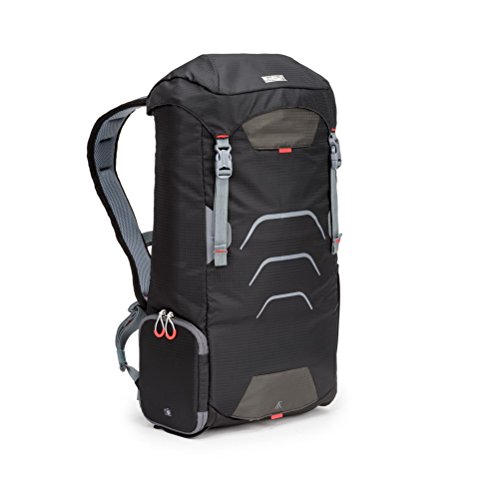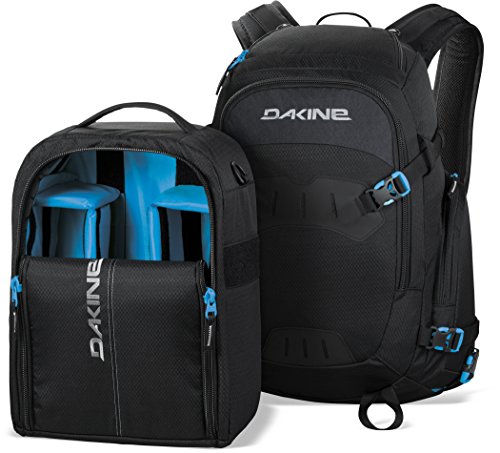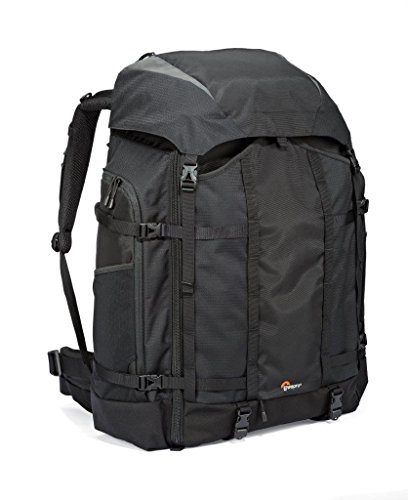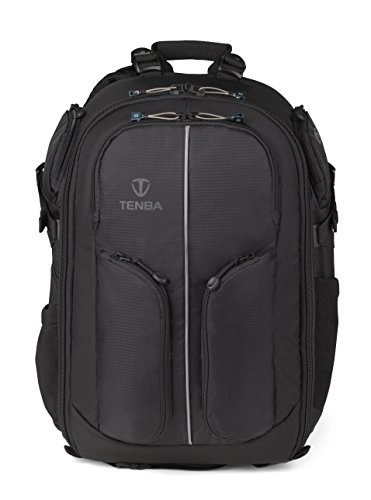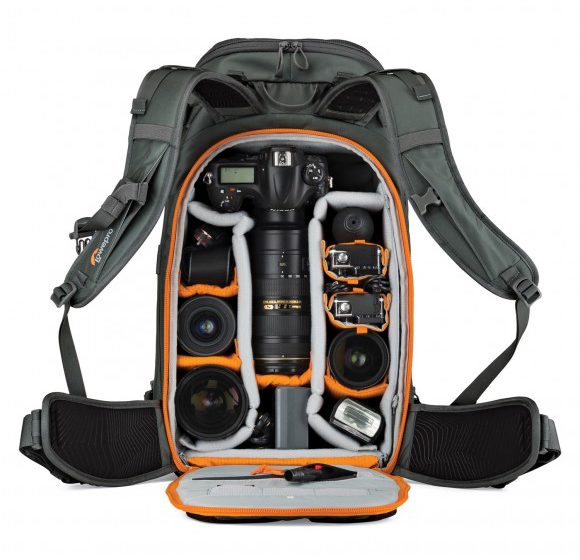
Updated for the 2018-2019 season.
What are the absolute best camera backpacks for hiking available in 2018 for carrying that expensive, valuable photo equipment in the backcountry? If you’re seeking to answer this question you’ve come to the right place, my friend. So buckle those hip belts because here we go:
Let’s start with why you need a camera backpack:
More...
- 1Compartmentalization meant specifically to isolate and protect that expensive electronic equipment
- 2Padding to separate camera gear from hiking gear
- 3Extra room meant solely to accommodate that extra load that only you are willing to pull into the backcountry (kudos to you!)
- 4Having the best camera backpack for hiking means getting the best outdoor photos
What size camera backpack do I need?
For backpackers who love to get those perfect remote wilderness photos finding the right size bag can be tough. As bags get bulkier they get heavy and cumbersome, too! Plus, unlike putting your camera bag in the back of your car, you actually have to carry this bag and all the gear on your back!
Let’s break down some rough guidelines for helping you choose the right size bag!
10-20L backpacks are good for smaller cameras including point and shoots or compact DSLRs on short day hikes. If you’re heading out on the trail and you’ll be back in a matter of hours you may only need a water bottle and the camera on familiar or short trails. This is a good place to start. Keep in mind that you probably won’t have room for extra lenses.
20-35L backpacks are good for full-size DSLRs on short hikes or smaller cameras on long day trips. If you need more than one lens, a couple batteries, a sack lunch, and a water bottle you’ll want something in this size range. These packs are still too small for overnight hikes with camera equipment.
40-60L backpacks are the right size for a couple nights on the trail with your camera equipment. With anything more than compact equipment you’ll want to quickly jump up in size if you plan to be out for more than a weekend.
60+L backpacks are necessary for longer hikes or bigger equipment. Carrying multiple lenses or full-size cameras makes this even more necessary. Use these bags if you plan to be out for up to a week with a load of camera gear.
What kind of hiking will I do?
This is an important question to answer before you buy a camera backpack!
For commuters riding the subway, taking the bus, and otherwise transporting cameras in more urban settings a “school backpack” style bag should suffice. These bags have simple shoulder straps, no suspension, and no hip belts.
For day hikers a more sturdy backpack with some kind of hip belt and or sternum strap might be helpful. When you’re hiking or climbing around in the woods trying to get that perfect photo, you don’t want your bag flopping all over. Hip belts and sternum straps help secure the bag and take some of the load off your shoulders.
If you’re going backpacking on overnight treks with your camera bag, you definitely want a good hip belt and frame. Great backpacks for these situations have a frame that distributes the heavy load of the camera equipment onto your hips and off of your shoulders which are weaker.
Please note that the following article is based on my experience with day packs and hiking not, necessarily, each specific pack herein. Affiliate links are used and we really appreciate your contribution.
Let’s just jump right into it because I know every minute you’re reading you’re not shooting sick pics in the outdoors. We’re going to break it down into the best camera backpacks for day hiking as well as the best camera backpacks for hiking overnight.
Name | Price | Weight | Rating | Notes |
|---|---|---|---|---|
$$$ | 1.9lbs (0.9kg) | Holds 1 large (un-gripped) Mirrorless body and 1-2 standard zoom lenses or primes | ||
$$$ | 5 lbs. (2.2kg) | Back Panel entry system | ||
$$$ | 7.28 lbs (3.31kg) | High-performance materials, serious attachment points and the technology to comfortably carry the gear you need into any environment | ||
$$$ | 9.46 lbs | Our ActivLift System harness is constructed to mimic the natural "S" curve of the back, transfer more weight from waist to hips, make it easy to fit to the length of your torso, and include airflow channels to improve breathability | ||
$$$ | 4 lbs | Quick Access side door allows a camera or lenses to be swapped out without removing the bag from your body. Side access channel fits a pro-size DSLR with an attached 70-200mm 2.8 lens |
Best for:
- Short Hikes
- Front Country or Sidecountry Hiking
- One DSLR and an extra lens if you pack smart
Weighing in at a mere 1.9 LBS or ~30 oz the UltraLight Sprint Camera Backpack is somewhere between a college day pack, a camera technical bag, and a day hiking pack.
Weighing in at a mere 1.9 LBS or ~30 oz the Ultralight Sprint Camera Backpack is somewhere between a college day pack, a camera technical bag, and a day hiking pack.
The reason this bag still takes our number one spot in 2019 is that it blends hiking daypack with minimal camera pack beautifully.
They’ve intentionally designed this pack so that the padded camera compartment takes up minimal space near the bottom and can be accessed separately. The top 2/3 of this bag has room for lunches, snacks, maps, and hiking equipment.
DWR coating on this day hiking camera backpack means that it will repel light drizzle and heavy mist. Do not mistake DWR for true all-protective water proofing though because, as the name suggests, it is simply highly water resistant. To properly protect your camera make sure you carry a backup waterproof camera sleeve and a backpack rain cover.
Best for:
- Long or remote day hikes
- Backcountry or technical terrain requiring extra gear (the ice ax loop might come in handy)
- Moderate loads or hikes requiring several lenses
As a full-time ski instructor over the last handful of years, I’ve personally seen Dakine evolve from rare and unknown to prolific and reputable. This pack still makes our cut in 2019 for the following reasons:
There’s enough room in this Dakine pack for plenty of equipment and enough snacks, supplies, and goodies to get you through even the most demanding days of photographing, video shooting, and following your clients up those gnarly slopes, brah.
External daisy chain attachments and ice pick loops mean there’s room on this camera backpack for some accessories but make no mistake; you won’t be stuffing enough contents in here for a multi-day excursion.
A full size padded hip belt will help with load bearing so this camera bag can handle the heavier loads that the extra capacity will require. However, they are not full suspension hip belts and I’m left wondering how comfortable they’ll be.
Added benefit: this backpack has a laptop sleeve.
Best for:
- Balance of budget, size, and quality
- Moderate load capacity with an appropriate suspension system
- Backcountry skiing or sidecountry skiing
This is hands down the best camera backpack for backcountry skiing in the 2018/2019 season.
It’s no secret that Lowe Pro is marketing this camera backpack straight at the heart of sidecountry skiers. Plenty of external strapping leaves room for skis, axes, avalanche gear, etc.
If you want to shred the pow with your bros and get some sick photos for that next backcountry edit, the Lowepro Whistler BP 450 AW might be your backpack.
I really like that the gear compartment is actually big enough to get critical backcountry skiing gear into. You’ll need every inch of space you can get to fit the shovel, probe, beacon, ice axes, and skis on here along with your camera equipment.
Best for:
- Huge camera loads
- Extended travel and airline travel where you’ll need every piece of equipment you’ve got
- Beefy suspension worthy of just about anything you can manage to shove in the pack
This pack is definitely a beast of a camera backpack. If you’re traveling the world and carrying some lenses that are larger than many small dogs, this is the pack for you!
Absolutely less technical than the Whistler BP 450 , this pack is all about camera gear and not about backcountry gear.
You’ll want to stick close to a support team or a town while carrying this pack but it’s exactly what the doctor ordered for traveling photographers that won’t take no for an answer.
If you’re a gearhead and want a bag that can handle everything but the kitchen sink, this one is for you.
Best for:
- Long dayhikes with heavy equipment
- Multiple lenses
- Extra hiking or camera accessories
New for 2019! The Tenba Shootout bag is better for cameras and trails than Western movies. That said, it comes in several different sizes depending on your hike duration and camera size.
Sizes include:
- 12L
- 14L (GoPro version)
- 18L
- 24L
- 32L
Above many other bags on our list, I do like that the Tenba Shootout series has a seriously beefy aluminum frame. With the added weight of bulky camera bodies and lenses, weak packs can struggle to handle heavy loads. This amped-up frame is not going to have a problem with that, though!
I will say that I would have liked to see a more ergonomic hip belt and shoulder straps on this bag. However, it makes up for that with the added outer pockets which make a great place for hiking snacks or a trail map.

